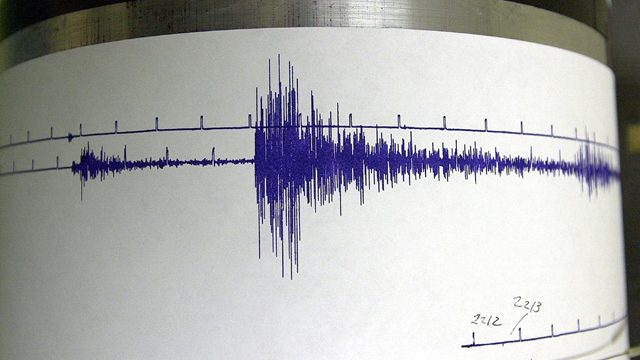
Gov. Gavin Newsom said Wednesday that the state hopes to expedite the release of several thousand low-risk inmates at state prisons such as San Quentin that have seen outbreaks of the COVID-19 coronavirus in their populations.
State courts are currently reviewing a cohort of about 3,500 inmates in the state prison system who have been targeted as candidates for early release during the coronavirus pandemic.
Newsom said he hopes to start seeing prisoners released before July 1 in an effort to "decompress" a prison system that has confirmed 3,864 cases to date, according to data from the California Department of Corrections and Rehabilitation.
At least 456 inmates in San Quentin have tested positive for the coronavirus as of Wednesday, according to Newsom. The results of an additional 1,818 tests are still outstanding.
Approximately 3,700 inmates are currently being held at San Quentin, roughly 122 percent of the prison's maximum capacity, according to CDCR data from April.
CDCR spokeswoman Dana Simas said all San Quentin staff and more than 45 percent of the prison's population has been tested and San Quentin has identified dedicated isolation and quarantine housing for confirmed patients.
"CDCR and (California Correctional Health Care Services) will continue to work together, along with state and local health care and public health experts, to implement measures that will protect those who work or live in our state prisons," Simas said in a statement.
California
News from across California
Criminal justice advocates and medical professionals have warned in recent weeks that state prisons and large incarceration facilities are powder kegs amid the COVID-19 pandemic.
A group of medical experts from the University of California Berkeley and UC San Francisco issued such a warning in a June 13 memo about the urgent need to reduce San Quentin's population by at least half to avoid catastrophe.
"It is a frightening public health reality that in a matter of days there may be no cells to isolate a potentially infectious COVID-19 patient," the group wrote in the memo. "The only way to manage the situation is to significantly reduce the prison population."
"It's a concern, always has been," Newsom said of prison outbreaks like the one at San Quentin. "We have not been shy about leaning in on this over the course of many, many months."
He said, "We still have a lot more work to do in that space and we recognize our responsibility to do so."
In addition to overcrowding, criminal justice advocates point to the May 30 transfer of some 120 inmates from the California Institution for Men as an inflection point for the virus' spread at San Quentin.
The Chino facility had approximately 500 active cases at the time and had reported 13 deaths due to the virus. CDCR data now has those figures at 854 confirmed cases, 495 of them active, and 16 deaths.
Nearly all of San Quentin's cases have been confirmed in the last 14 days. The prison now has the fourth-most cases of any prison in the state.
"Well-meaning public health proposals devised for people in the outside world cannot and will not help the spread inside San Quentin because the central problem is that the prison needs to be nearly empty before these measures can be successful," Sue Chan, a health care worker and the mother of a San Quentin inmate, said last week during a news conference held by criminal justice advocates with Oakland's Ella Baker Center for Human Rights, a group of former San Quentin State Prison inmates and the families of current inmates.
Compounding the concern of coronavirus cases spreading inside San Quentin is that roughly 46 percent of inmates have at least one medical vulnerability that could raise their risk of significant damage if they contract the virus, according to Newsom.
Newsom said the health and safety concerns for San Quentin inmates have not been lost on him during the pandemic since he lived in Marin County, where the prison is located, for several years.
"It's always been top of mind, it's always been a point of concern," he said. "(It's) not surprising to see the numbers, more generally, increase."
Over the last several months, the state has already taken steps to reduce overcrowding at its prisons by releasing some cohorts of inmates such as those who were within 180 days of their scheduled release and met criteria like not being a sex offender and not having a history of domestic violence.
CDCR officials have argued that they are taking several steps to maintain health and safety inside state prisons and prevent the virus' spread such as the installation of alcohol-based hand sanitizing stations and routine cleaning and sanitization.
However, critics have said the prison system's issues controlling the spread of the virus are partially due to a simple lack of proper facilities for those who have tested positive for COVID-19 and those who have been exposed to an inmate or correctional officer with the virus.
The group of Berkeley and UCSF experts argued that the Adjustment Center, where coronavirus patients are being quarantined at San Quentin, has roughly 102 single cells with solid doors in which to isolate and quarantine those who test positive for COVID-19, but those cells will fill rapidly because around 80 were already full prior to the pandemic.
The group called both for the establishment of a field hospital to care for coronavirus patients inside the prison and removing patients from rooms with solid doors, allowing medical and nursing staff greater oversight over their condition.
"The urgent resources San Quentin requires range from human capital to environmental risk reduction and rapid testing," the experts wrote in the memo. "Failure to meet these urgent needs will have dire implications for the health of incarcerated people at San Quentin, correctional staff and the healthcare capacity of Bay Area hospitals."



